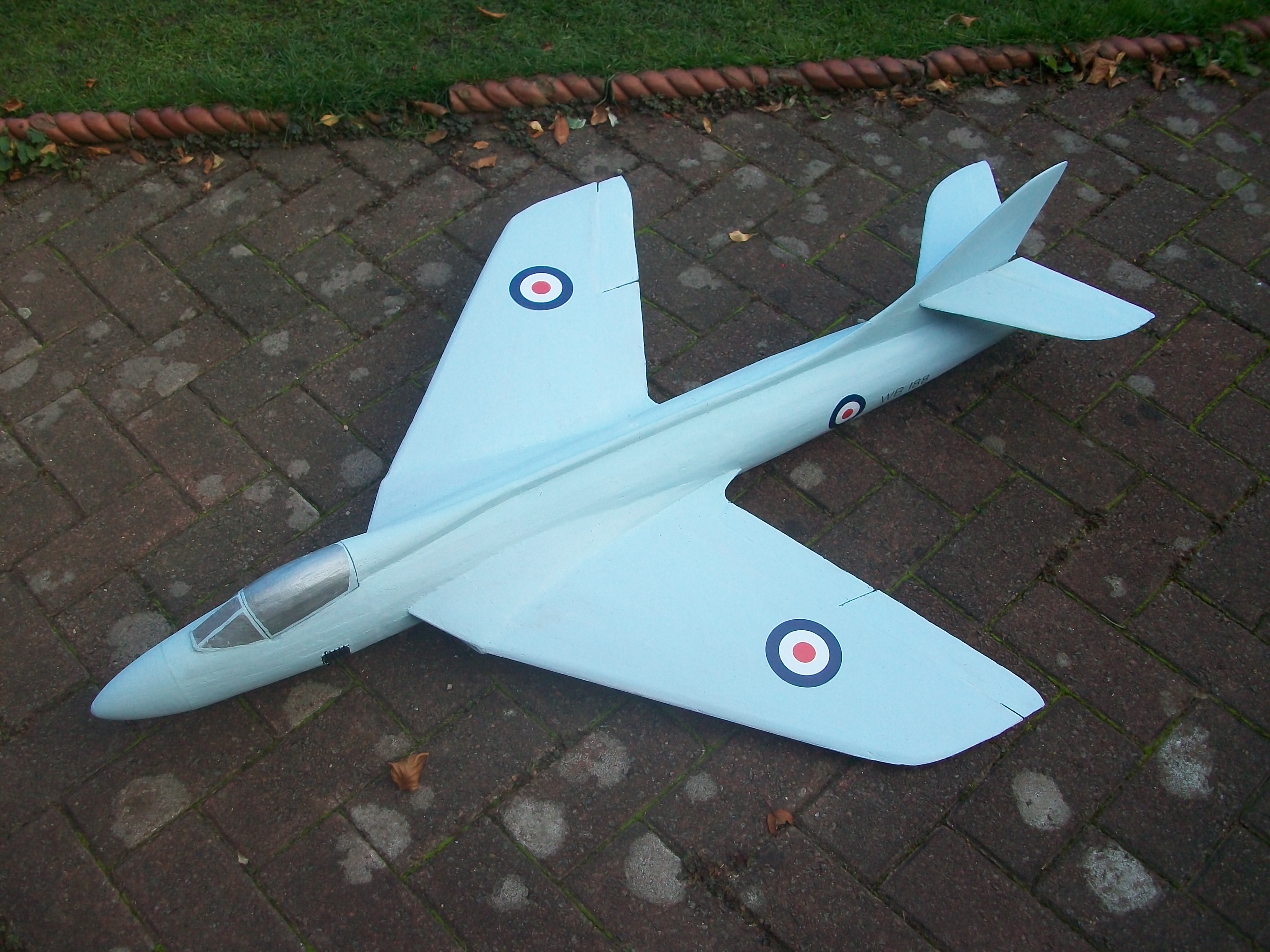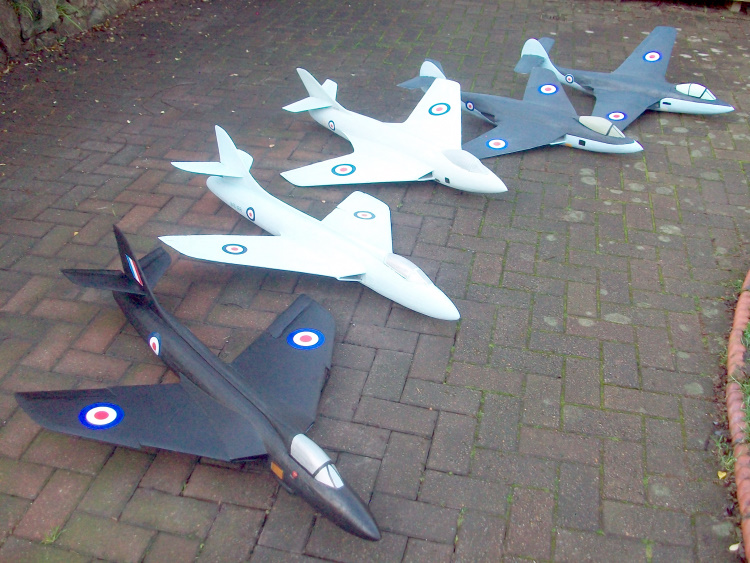quorneng
Master member
Making use of a generous (and free) supply of 5 mm XPS foam (laminate underlay) I first built a Hawker Sea Hawk (first flight 1947) using 3d printing to make the rather complex bifurcated inlet and exhaust duct.

Then in 1948 came the Hawker P1052 which basically added swept wings to the Sea Hawk fuselage so it seemed logical to build that in the same material and to the same scale.

The only P1052 still exists and has been repainted in standard Navy colours.
The performance of the P1052 rather went beyond the capability of the Sea Hawk fuselage so Hawker redesigned and strengthened the rear fuselage with a straight through exhaust as the P1081 which first flew in 1950. It ultimately included a new fin and a swept tail plane but still using the RR Nene. I just had to build that as well.

Painted in the Hawker prototype very pale green/blue.
By 1951 this line of development resulted in the Hawker Hunter using the axial flow and more powerful RR Avon. So I built the prototype Hunter too but using a more powerful 50 mm EDF rather than previous 55 mm units.

Also painted in the prototype pale green/blue although on the day the camera had other ideas!
So in a period of just 4 years jet fighter development moved from a straight wing that could get just close to 600 mph to the Hunter that could exceed 700 mph and go subsonic in a shallow dive.
I have to admit I have never built four planes so quickly one after the other or even to the same scale and perhaps even more surprising is that apart from the printed ducts they are all built of only 5 mm XPS foam (no wood or carbon) and they all fly (hand launch/belly land) pretty nicely.
The P1081 maiden.
I really need to get out more!

Then in 1948 came the Hawker P1052 which basically added swept wings to the Sea Hawk fuselage so it seemed logical to build that in the same material and to the same scale.

The only P1052 still exists and has been repainted in standard Navy colours.
The performance of the P1052 rather went beyond the capability of the Sea Hawk fuselage so Hawker redesigned and strengthened the rear fuselage with a straight through exhaust as the P1081 which first flew in 1950. It ultimately included a new fin and a swept tail plane but still using the RR Nene. I just had to build that as well.

Painted in the Hawker prototype very pale green/blue.
By 1951 this line of development resulted in the Hawker Hunter using the axial flow and more powerful RR Avon. So I built the prototype Hunter too but using a more powerful 50 mm EDF rather than previous 55 mm units.

Also painted in the prototype pale green/blue although on the day the camera had other ideas!
So in a period of just 4 years jet fighter development moved from a straight wing that could get just close to 600 mph to the Hunter that could exceed 700 mph and go subsonic in a shallow dive.
I have to admit I have never built four planes so quickly one after the other or even to the same scale and perhaps even more surprising is that apart from the printed ducts they are all built of only 5 mm XPS foam (no wood or carbon) and they all fly (hand launch/belly land) pretty nicely.
The P1081 maiden.
Last edited:



